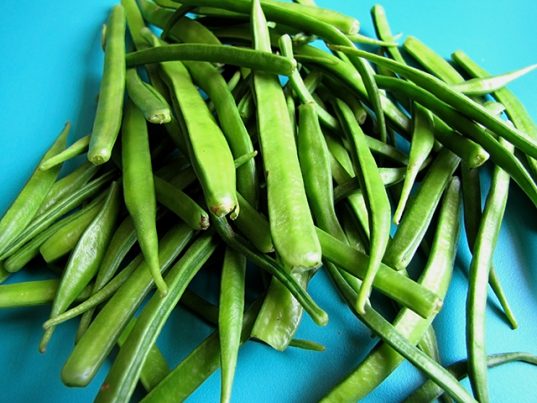
Locust Bean Gum – toxicity, side effects, diseases and environmental impacts
Saturday, November 18, 2017 by Rita Winters
http://www.naturalpedia.com/locust-bean-gum-toxicity-side-effects-diseases-and-environmental-impacts.html

Locust bean gum is a natural polysaccharide, or a vegetable gum, from the carob tree (Ceratonia siliqua). It’s basic use is to thicken, stabilize, emulsify, and preserve processed products. It is sweet and similar to chocolate in taste, and is sometimes used to substitute chocolate. Locust bean gum, otherwise known as carob gum or carob bean gum, may also be used in some medicinal formulations.
While the Food Development Authority (FDA) considers it as a Generally Recognized As Safe (GRAS) food ingredient, there are not enough studies to determine if it really is. Some supplements contain locust bean gum, even if it is highly inappropriate as a supplement or source of nutrition. SCD (specific carbohydrate diet) and GAPS diets prohibit the uses of gums, due to the risk of gastrointestinal inflammation and gut flora disruption. It may also contain impurities from its extraction process such as husks, germs, residual amounts of ethanol and isopropanol, and microbiological contamination. Some reports show that locust bean gum may cause diabetes mellitus and other gastrointestinal disorders.
Other terms used in lieu of locust bean gum may include: Alanine, algaroba, arobon, Caesalpinioideae (subfamily), carob bean gum, carob flour, carob gum, carobel, caruba, cellulose, ceratonia gum, Ceratonia siliqua, cheshire gum, China-Eisenwein, cinnamic acid, Fabaceae (family), flavonoids, free gallic acid, fructose, galactomannan, gallic acid, gallotannins, glucose, glycine, goma de garrofín, gomme de caroube, gumilk, hemicellulose, Leguminosae (family), leucine, locust bean, locust bean gum, maltose, methyl gallate, Pomana A, phenolic antioxidants, phenylalanine, praline, St. John’s bread, sucrose, tannins, Thiacyl au Caroube, tyrosine, and valine.

List of known side effects
Many have reported locust bean gum’s side effects, even if the FDA considers it as a safe food ingredient. Locust bean gum may trigger or cause allergies, respiratory problems (asthma, nasal discharge, etc.), diabetes, gastrointestinal problems (diarrhea, IBS, bloating, gastroesophageal reflux, etc.), hypercholesterolemia (high cholesterol), urticaria (hives), angioedema (lip swelling), migraines, mononucleosis, hyperlipidemia, and hypouricemia (low uric acid).
Body systems affected by locust bean gum
Individuals who are prone to diabetes must not ingest locust bean gum. Infants, pregnant women, and breastfeeding mothers should not take it as well, due to the various gastrointestinal side effects the carob gum may cause. It is also known to cause high blood pressure so individuals with cardiac diseases should avoid it. People with allergies to various nuts and legumes must avoid it as well, since it causes the same type of allergy.
Items that may contain locust bean gum
Locust bean gum may be found in the following food: baked goods and baking mixes, fermented milk, cheese, cream, infant formulas, chocolate, coffee, non-alcoholic beverages and beverage base, fish products, dried pasta, gelatins puddings and fillings, pet food, and cosmetics.
Where to learn more
- Gum additives in food: What you need to know and watch out for
- Why you MUST read labels
- Know what you eat before you eat it
- Sneaky meat byproducts may be making you sick – but where are they hiding?
- 70,000 food additives approved by the FDA – What you don’t know will hurt you
Summary
Locust bean gum is not fully studied and is considered unsafe. Reports show that it may trigger allergy attacks, respiratory and gastrointestinal illness. Locust bean gum supplements should be avoided.
Sources include:
Tagged Under: Tags: locust bean gum





